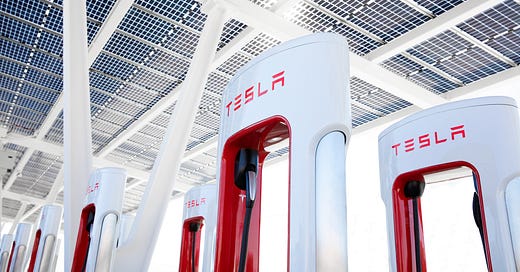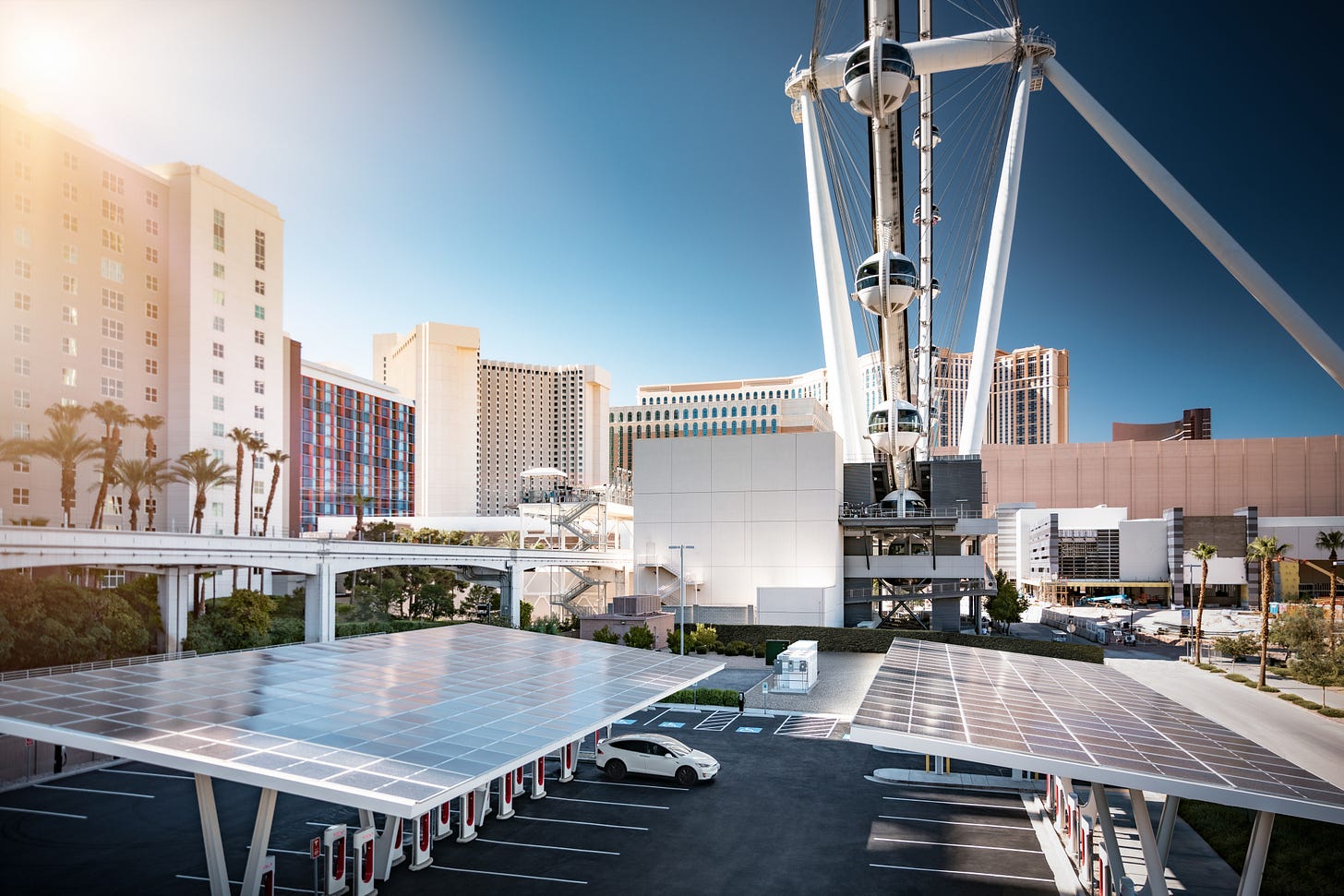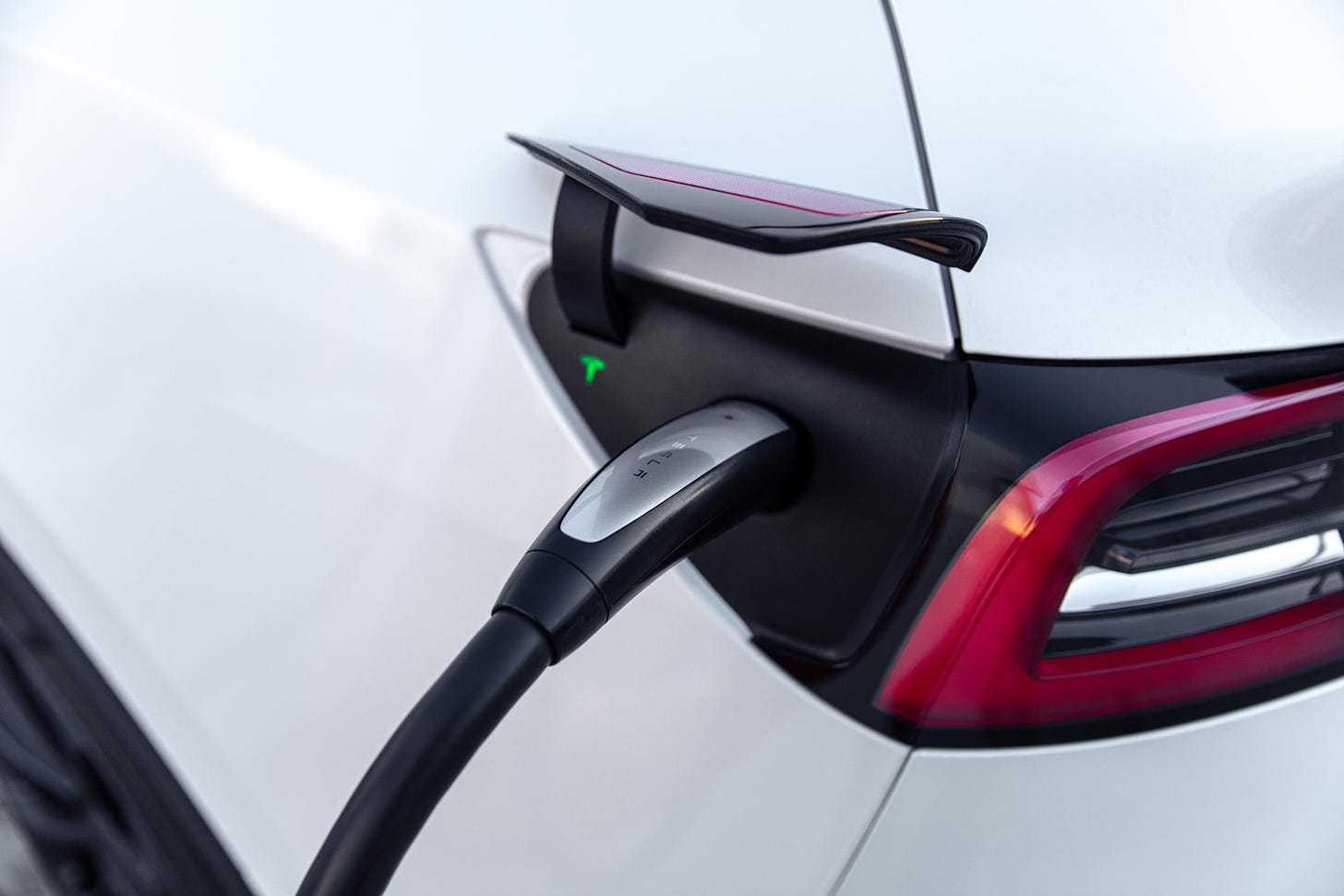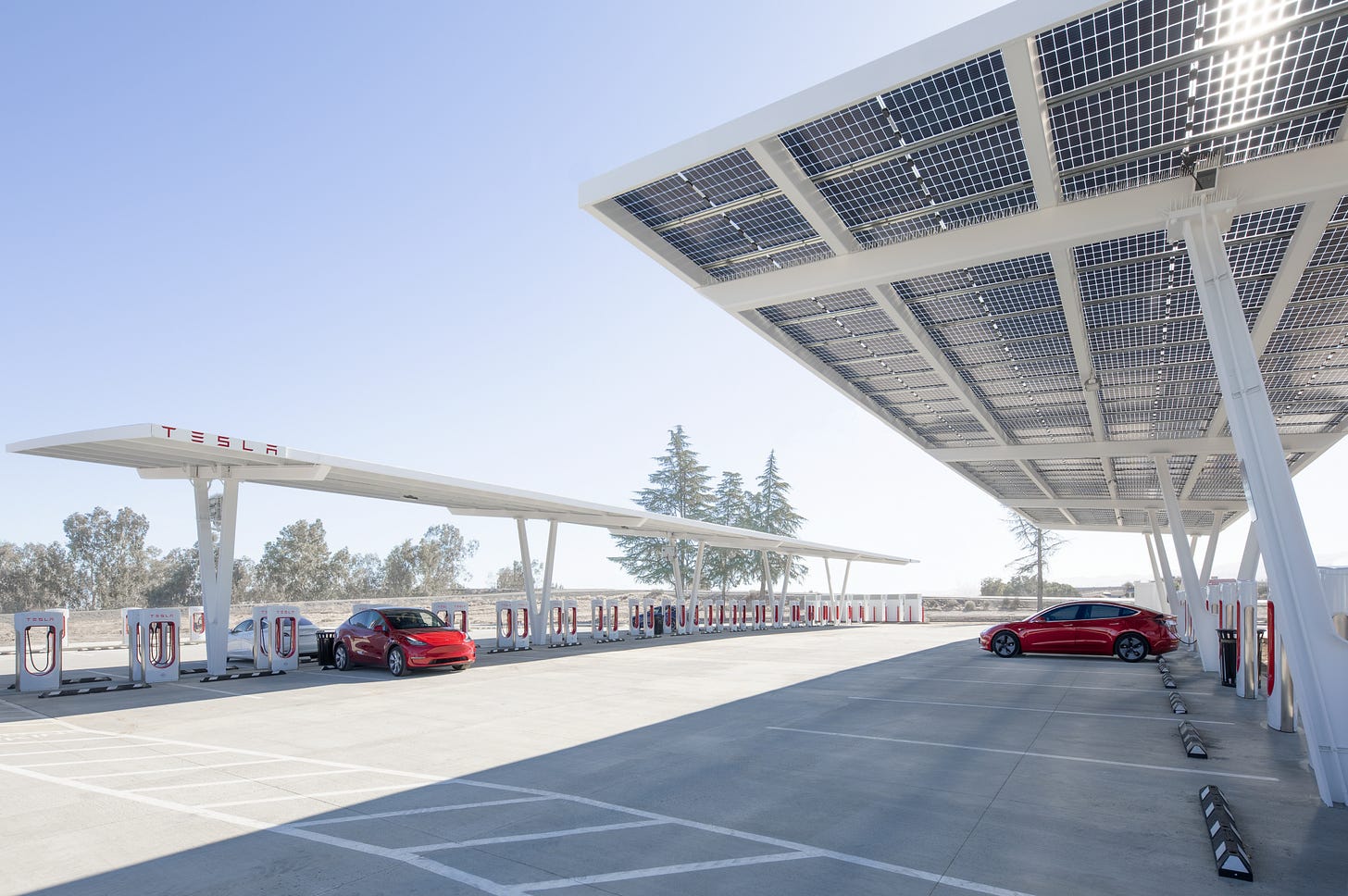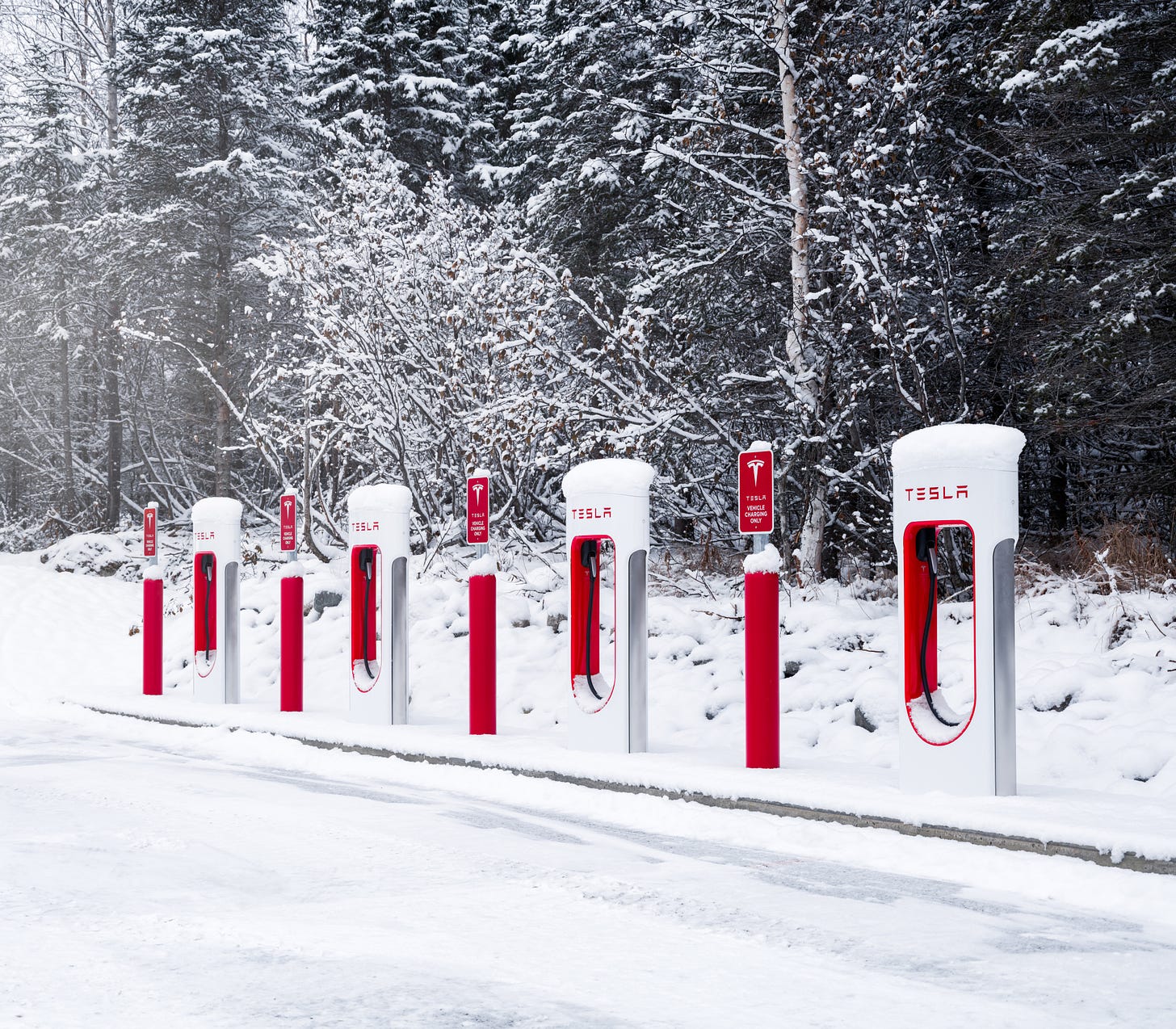Why Ford's Embrace of Tesla's Plug is a Huge Win for Consumers
CEO Jim Farley's bold move to adopt Tesla's NACS charging system will revolutionize the EV landscape (and sell a ton more EVs)
In the electrifying world of EVs, change sparks both innovation and controversy. Ford's decision to adopt Tesla's NACS charging plug in its future EVs has ignited a heated debate, while the potential for innovation remains to be seen.
, a fellow car journalist whom I greatly respect recently wrote disapprovingly on his own Substack about his concerns, and it’s worth reading (even if he is somewhat incendiary towards Musk, for whom his distaste is obvious). However, in my view, Ford's move is not only bold but beneficial for consumers.With the obvious benefit of opening up thousands of Supercharger stations worldwide to Ford customers, this decision gives Ford a significant leg up over other non-Tesla EV makers and will likely result in more carmakers following suit and adopting the protocol.
Stevens argues that Ford's adoption of the NACS plug deviates from the globally accepted Combined Charging System (CCS) standard. However, let's remember that standards should serve consumers, not the other way around. All of Tesla’s US cars have been equipped with the NACS plug for over a decade now, and it’s reasonably argued that — with Tesla being by far the market leader in EVs — it is Tesla’s NACS that is the consumer-preferred standard in the United States, not CCS.
By adopting this plug and providing access to the Tesla Supercharger network, Ford isn't subtracting options for its customers - it's adding them. Ford EV owners will have the flexibility to use both CCS and Supercharger stations (albeit with an adapter), dramatically broadening their charging network choices. Tesla’s Supercharger network, renowned for its rock-solid reliability and extensive reach, has been a significant selling point for Tesla vehicles for years. Now, Ford's decision allows its customers to reap similar benefits.
Tesla has also started rolling out its “Magic Dock” solution at select Supercharger stations, opening them up to CCS-port having EVs, including Ford product. The Magic Dock incorporates a built-in CCS adapter that allows non-Tesla vehicles, like the CCS-equipped Mustang Mach-E and the F-150 Lightning, to charge seamlessly at Supercharger stations. I recently tested the Magic Dock with a Rivian R1S electric SUV at a Supercharger station in New York and loved the experience:
Stevens also raises other concerns that warrant consideration. He points out that shorter Supercharger cables could pose challenges for larger vehicles like the Ford F-150 Lightning, given that the charging port on the Lightning is on the front left of the vehicle rather than the back left on a Tesla. However, this logistical hurdle can be readily addressed by repositioning the charging ports in future models to match the rear-left port placement on Teslas or by building future Supercharger stations to accommodate a range of vehicle port locations.
Charging port location is likely the least of most EV owner worries when it comes to fast charging. There are countless stories about DC fast charging sessions being difficult to start or, worse, not working at all. I suspect consumers would greatly prefer a slightly difficult parking situation with a working charger to a hit-or-miss charging solution with marginally better parking.
The @RateYourCharge Twitter account recently found that, according to its collected feedback, more than 90 percent of Tesla Supercharger experiences are problem free versus barely 50 percent at Electrify America and EVGo stations.
Stevens goes on to argue that Ford's existing customers might somehow feel alienated by the decision, which is a staggering misread of the situation. Ford's EV owners will likely welcome expanded access to the Supercharger network. It's an upgrade, not a downgrade, and a significant one at that. Ford EV owners will now get access to the country's largest and most reliable fast-charging network, a benefit of which they had no awareness when they bought their car.
While he correctly points out that customers will have to use an adapter to charge at Tesla stations… so what? Any customers who are so opposed to an adapter (which Ford CEO Jim Farley suggests will be provided to existing customers for free) can continue with the status quo, while everyone else will happily plug in at their local Tesla station with whatever adapter is required.
One valid concern raised by Stevens relates to the current lack of bidirectional charging support — that is, the ability to take electricity out of the EV and use it to power a house during a blackout — in the NACS standard, a feature Ford has spent ample marketing dollars touting for its F-150 Lightning electric pickup. However, Tesla CEO Elon Musk promised to add this feature within two years. Ford's NACS-equipped vehicles won't hit the roads until after that, so there's ample opportunity to incorporate this functionality even if Elon’s legendary tendency to misstate timelines holds.
I’d bet that Ford CEO Jim Farley brought up bidirectional charging during negotiations with Elon and that Tesla will prioritize developing support for it in the NACS standard.
Lastly, Stevens worries that this change could somehow confuse consumers. Confuse them how? This is the most straightforward product announcement in the world:
"Ford vehicles can now use Tesla Superchargers."
This is perhaps the most compelling marketing that Ford could imagine and one that greatly simplifies the EV charging landscape for Ford customers. The current situation, where non-Tesla EVs can't use the highly visible and abundant Superchargers, is what confounds customers.
Ford's decision to adopt Tesla's NACS plug and Supercharger network is a progressive move that greatly benefits Ford customers and advances the EV industry. Instead of adhering to a standard for the sake of conformity, Ford has chosen to prioritize what's best for its buyers.
Even better, this decision could pave the way towards a more unified, efficient, and consumer-friendly EV charging landscape, as other companies will feel intense pressure to adopt the Tesla charging port and ensure their EV buyers also have access to the Supercharger network — a network that is going to receive hundreds of thousands of new users and, I suspect, significant new investments from Ford to boot.
Change may be a constant in the EV world, but in this case, change is indeed good.

